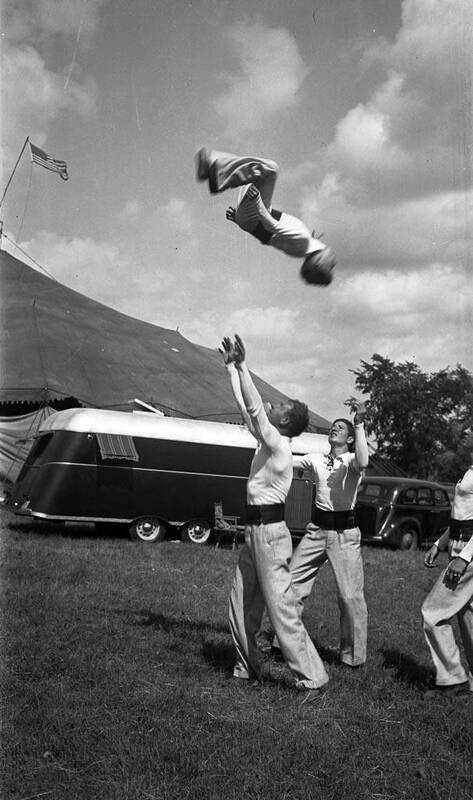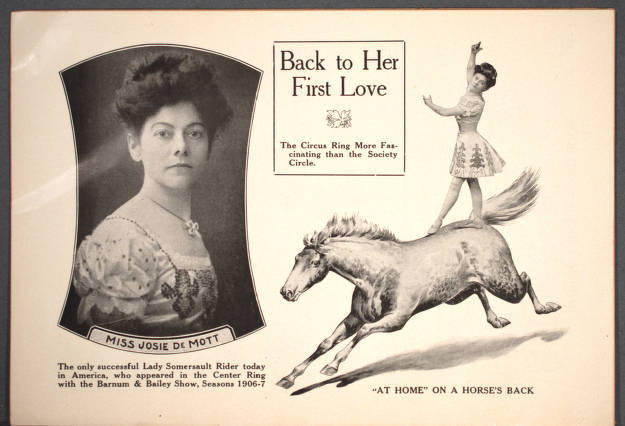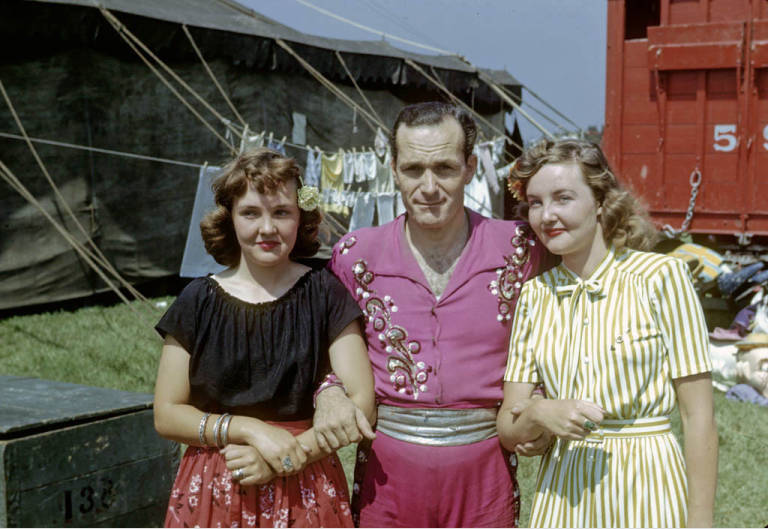20th Century Circuses in Illinois: Circus Families
The concept of running away to join a circus suggests that it was a place for outsiders, or simply those who wanted to find a home on their own terms. Despite the stresses of show business, people tended to stay with the circus once they joined, suggesting that they also valued the sense of community they found there. The circus attracted a variety of people; many came from poor backgrounds. James A. Bailey (one half of Barnum and Bailey) had a miserable childhood, which he took charge of at only eleven years old, when he decided to leave home and join the circus. He found a family there, and a place where he was content. He continued working in the circus world until his death. Some women also chose a life in the circus as a way to work outside of the domestic sphere. Additionally, anyone who looked or acted too different from what was considered normal for the day often saw the circus as a refuge. Although they were then exploited for these differences, some circus folk found community working alongside those who understood their experiences.
Many children of circus performers followed in their parents’ footsteps and continued their work. The profession tended to become a family business. This was in part because, until the 1970’s, the circus arts were not widely taught outside of the circus. Those already living in the circus world tended to learn the performance skills, rather than outsiders. Pictured here is the Coriell family, rehearsing their acrobatics act.
Performers Rehearsing. Sverre O. Braathen, photographer. July 5, 1937. Illinois State University.
This image shows the brothers Joe and Ted Hodgini, and Joe’s wife, Caroline. All three worked in the Seils-Sterling circus together; Joe and Ted were both clowns while Caroline was involved in the riding acts.
Circus Performer Family Members. Sverre O. Braathen, photographer. May 15, 1937. Illinois State University.
Many of the most famous circus performers during the early 1900s (the circus’s heyday) came from families who had been in the business for decades, or even generations. Josie DeMott Robinson was a vaulter and came from a riding family; she also was raised in the DeMott and Ward Circus, which was owned and run by her parents.
Barnum & Bailey Route Book 1907 and 1903, 1904, 1905, 1906 Five Years in One [Page 18]. Barnum and Bailey, creator. Illinois State University.
Pictured here (L-R) are Patsy Pelikan, Karl Wallenda, and Leitzel Pelikan. Leitzel Pelikan, an aerialist, was named after her aunt, Lillian Leitzel. Lillian Leitzel was a 20th century circus star whose mother was also an aerialist. The mother and daughter performed together in a troupe until Leitzel left Europe for America to join the Ringling Bros., where she was widely renowned as one of the most talented aerialists in the country.
Two Families of Aerialists. Sverre O. Braathen, photographer. August 18, 1945. Illinois State University.




